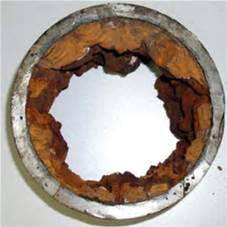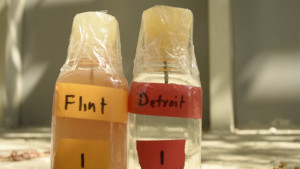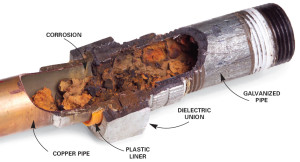More On Flint Water
The tragedy of Flint, Michigan water continues. Most people in our country take water for granted. Turn the handle and clean, safe water comes out. There is a bill to pay every quarter or month, but it is not very expensive. If you are having paying, the water provider will work with you.
When a Flint resident turns the handle, red, turbid water high in lead comes out. It is not safe to drink and is dangerous for bathing and dishwashing. When it is water bill time, Flint has the highest water rates in the country. People are paying a lot of money to damage their brains.
There was a Legionnaires Disease outbreak which killed nine people and sickened many others. Legionnaires Disease is waterborne, usually from the aerosol from showers in buildings using a recirculating warm water system using cooling towers or rooftop storage tanks. The bacterium is often present in drinking water along with other bacteria and viruses in low numbers.
Disinfection in water treatment is intended to kill pathogenic organisms in the water. It does not sterilize the water. Given proper conditions, those organisms can multiply enough to pose a public health problem. The big ones are the cooling towers and storage tanks. Another potential source are the rusty accumulations called tubercles in old cast iron pipes. This is usually not a big problem because the bacteria are contained in the tubercles.
When the water chemistry changes, making the water more corrosive, the tubercles break down, making red water and releasing the accumulated pathogens. The water leaving the treatment plant is safe, but corrosive conditions in the distribution system release lead from old lead service lines running to houses that have lost their protective coating; and pathogens are released from tubercules breaking down in the water mains.
The potable water industry is highly regulated. The utility itself is mandated to treat and test the water to insure its safety. This includes testing water from individual taps in the distribution system. County health departments also regularly test drinking water. State Health Departments are also equipped to monitor water quality, although normally they rely on reports from the providers. All this is overseen by EPA under the Safe Drinking Water Act. The Centers For Disease Control also respond when unusual outbreaks occur.
This is a lot of regulation and a lot of bureaucracy. Usually the agencies work well together, as they share the same mission, assuring the water is safe. The system broke down in Michigan when the state government assumed control of local cities facing a budget crisis. The emphasis shifted from providing safe water to saving money. The money savers were not water people and tended to ignore those reporting the unsafe water. Instead of interagency cooperation, distrust arose.
Flint is a city in crisis. It once was a General Motors town, with lots of good paying jobs. Many of those jobs are gone, the people who could afford to moved away. Those left are poor and mostly black, with little political influence. A toxic governmental situation created a toxic water situation.
A main role of government is to protect the health and safety of the people. It seems the Michigan state government avoided responsibility in order to save money. There seems to be a large movement in our country to reduce the size of government. This cost saving often comes at the expense of infrastructure. As the roads, bridges, water and sewer systems, schools, police and fire departments decay, the quality of life of the citizens also decays. All this did not seem to matter in Flint or the rest of Michigan, because the citizens affected tended to be poor and black.



